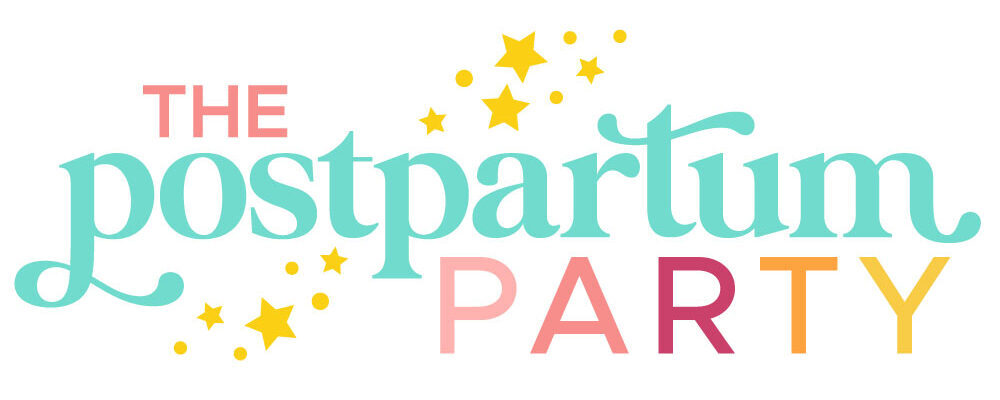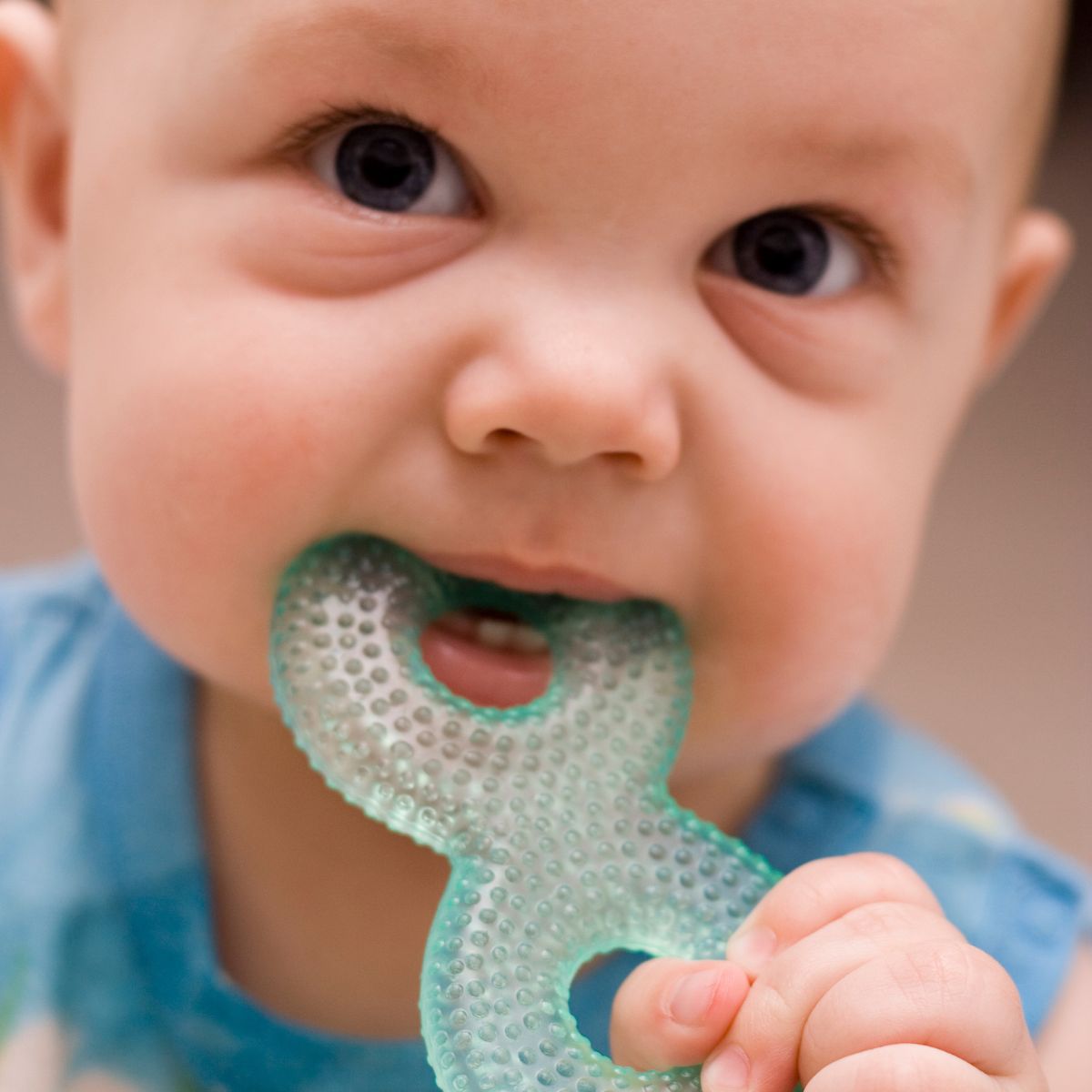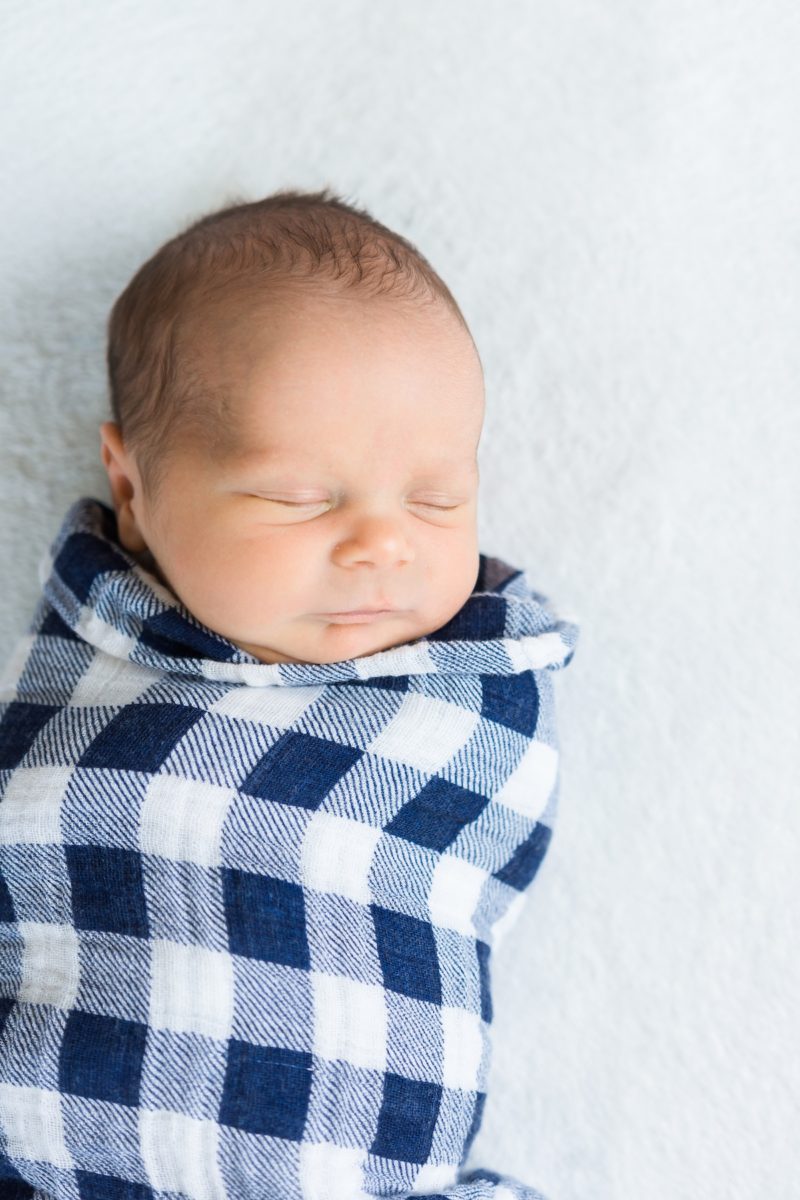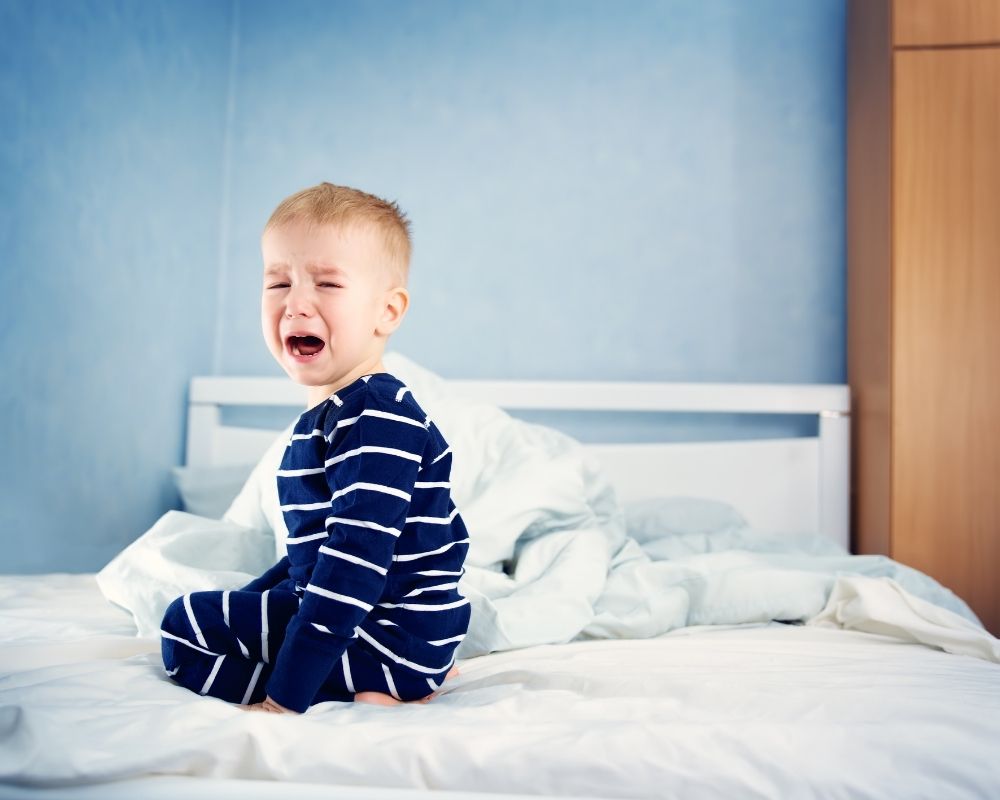Onesies, swaddles, and sleep sacks, oh my! How should you dress your baby for sleep? Let’s talk swaddle vs. sleep sack and which one is best for your baby.
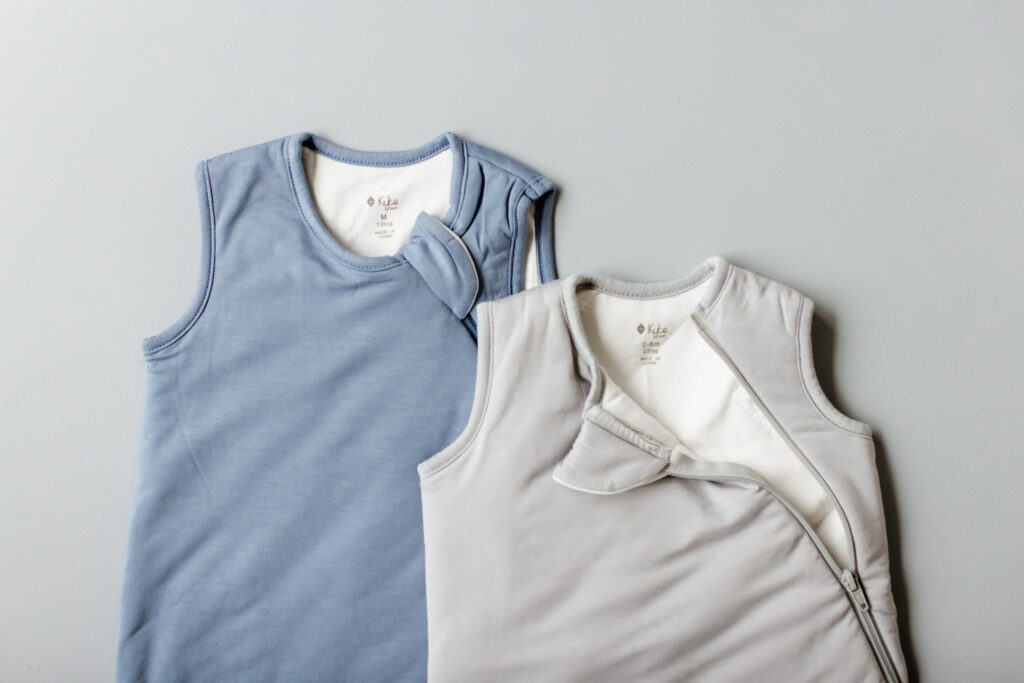
If you’ve ever put together a baby registry, you know that there are a lot of sleep-related baby products out there.
I know it can be overwhelming and confusing. How are new parents supposed to know which items are actually necessary for good sleep?
Even more confusing, it seems like there are infinite options for how to dress your baby to sleep.
Some parents find themselves wondering if swaddling is necessary. Is it possible to skip swaddling completely and go straight to using sleep sacks?
In the bedtime battle between swaddle vs. sleep sack, which is best?
The answer depends on your baby’s age, their development, and what works best for your family. Let’s explore your options when it comes to swaddles vs sleep sacks.
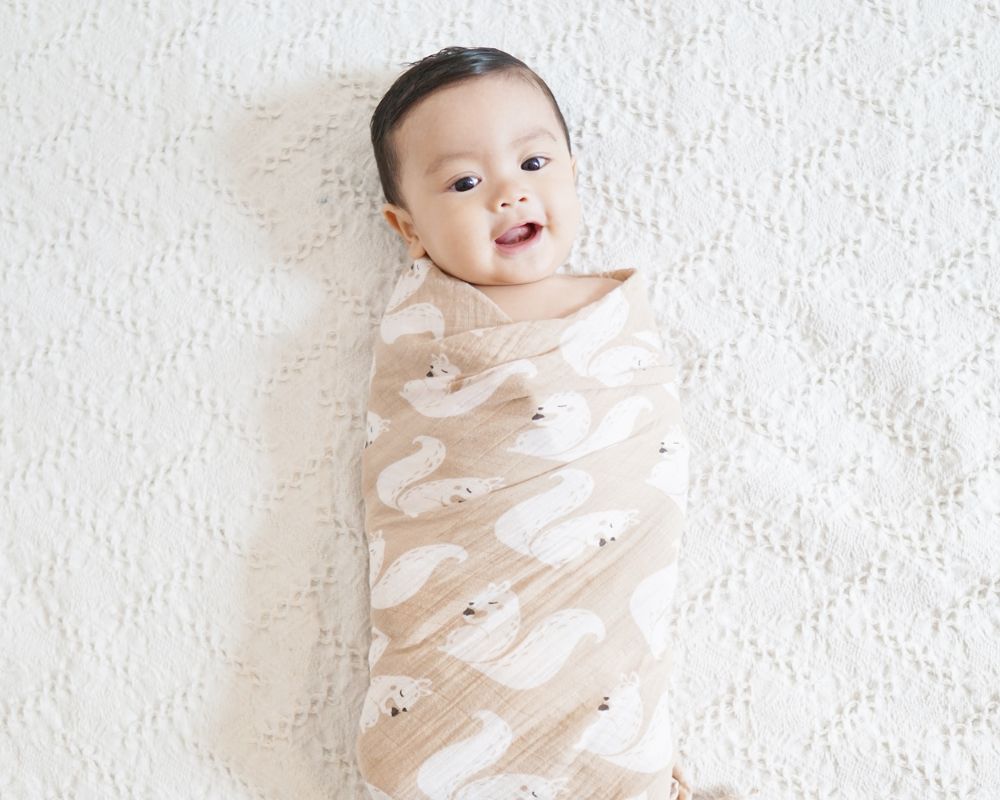
The Benefits of Swaddling
Just like so many other parenting choices, there are pros and cons to swaddling. But as long as you do it safely, I am a firm supporter of swaddling in the newborn days.
In fact, when parents of newborns tell me their baby hates the swaddle, I do everything I can to help them troubleshoot and find a swaddling method that will work for them.
When done well, it’s incredible to see how soothing a swaddle is for a fussy baby.
The swaddle can be a very powerful sleep association, and it signals to your newborn that it’s time to rest. I recommend parents swaddle for naps and bedtime in those newborn days.
But swaddling doesn’t just help your baby get to sleep. It can also help them stay asleep for longer.
Swaddling newborns is so helpful because it prevents their startle reflex (also known as the Moro Reflex) from disrupting their sleep cycles. This reflex is present for at least the first two months of baby’s life.
A newborn’s startle reflex causes them to throw back their head and push out their legs and arms. As you can imagine, this causes a rude awakening for your little one.
When you swaddle a baby, there’s no way for their limbs to fly out—they can continue resting soundly.
In addition to preventing your baby from jolting awake, the swaddle is also beneficial because it mimics womb conditions. The swaddle is warm, and keeps your baby’s arms and legs close to their body in the fetal position they’re accustomed to.
I’ve put a list together of some of the best swaddles.
What if My Baby Hates the Swaddle?
If it seems like your baby hates being swaddled, it could just be that they don’t like the way you’re swaddling them. Don’t take it personally—swaddling is hard.
Try not to be discouraged by a little crying. If your baby fusses while you swaddle them, that’s okay. They are moments away from feeling more secure and relaxed.
The trickiest part about swaddling a baby is getting the swaddle to stay in place. Folding the perfect baby burrito takes practice, so don’t give up after a few failed attempts.
If your newborn keeps breaking out of their swaddle, give a different swaddling technique a try. We really liked Dr. Harvey Karp’s “DUDU” swaddle method.
If one of the more traditional muslin swaddle blankets is too difficult to use, you can also try using a swaddle with fasteners such as this one or velcro for a more escape-proof fit.
What Age Do You Transition from Swaddles to Sleep Sacks?
The AAP doesn’t provide a specific age to stop swaddling. Instead, it’s up to parents to make the call based on your baby’s development and ability to roll over.
Since every baby develops at a different pace, the time to transition from swaddle to sleep sack might come anytime between 2 months old and 3 months old.
If your baby can consistently get one or both arms out of their swaddle (or break out of it completely), it may be a sign they’re ready to transition out of the swaddle.
As soon as your baby shows signs that they are able to roll from their back to their tummy, you need to put them to bed with their arms free. No more swaddling for rolling babies.
Do I Need Swaddles and Sleep Sacks?
Ultimately when it comes to swaddle vs. sleep sack, I say it’s less of an either/or situation and more of a both situation. I think each of them have their place and usefulness for families.
Swaddling isn’t the only way to dress a baby to sleep. In fact, the swaddling stage in a baby’s life is pretty short, lasting just a few months.
It’s only safe to swaddle a baby up until the point that they start to show signs of rolling.
Every baby reaches the rolling stage eventually. When your baby starts rolling over, it’s time to stop swaddling.
Once your baby is no longer swaddled, it’s time to find another way to dress them warmly for bed.
Using blankets in your baby’s bassinet or crib is not safe until they are around 12 months old. Before then, the American Academy of Pediatrics (AAP) has identified any sort of draped fabric or blankets in the crib as a suffocation risk.
Even at 1 year old, most babies won’t keep a blanket on them through the night.
Since blankets are out of the question for younger babies, sleep sacks are a great alternative for when your baby doesn’t tolerate or has grown out of the swaddling phase.
A sleep sack is a secure wearable blanket that allows your baby’s arms to be free and provides more space for movement of their legs. It’s the safest option for rolling babies because it allows them to push themselves up or roll back over if needed.
Since the swaddling stage of your baby’s life is relatively short, you’ll want both swaddles and sleep sacks on hand for when they’re developmentally ready to transition out of the swaddle.
And the good news is, you’ll use sleep sacks for a lot longer than swaddles. Learn more about when to stop using sleep sacks. Hint: there’s no rush!
There are some swaddles that help you easily make the transition to sleep sacks and pull double duty. You can see some of the best transition swaddles here.
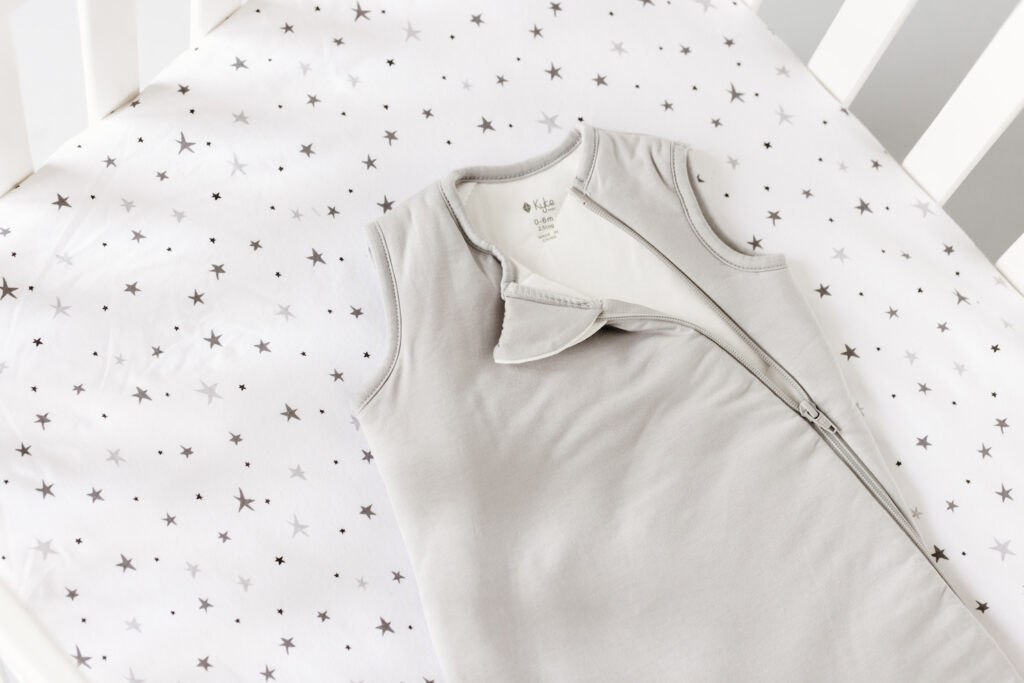
Are Sleep Sacks Okay for Newborns?
If swaddling ends up being something that simply isn’t tolerated by your newborn (or you!) in those early weeks, don’t worry. Even though swaddling can be helpful, every baby and family is different.
If you’re striking out on the swaddling front, you can still find ways to create other helpful sleep associations to signal to your baby that it’s time to sleep.
In fact, you can even try a swaddle alternative like a sleep sack. Sleep sacks are a safe alternative to swaddling for newborns, with one big caveat: the sleep sack needs to fit them well.
As I mentioned, the AAP deems any loose fabrics in the crib to be unsafe. Since newborns can be pretty tiny, you need to make sure that any sleep sack you use with a newborn is sized correctly, and is a snug enough fit to prevent them from wiggling out of it.
Any time you are using a sleep sack with a newborn, be sure that there’s no way for their small limbs to slip out of the sleep sack. This can lead to fabric bunching up in unsafe ways.
There are plenty of great sleep sacks on the market and you can see some of the best sleep sacks here.
- Practical Tips if your Toddler is Going Through A 3-Year Old Sleep Regression - April 26, 2024
- Baby Led Weaning vs Purees — Which Should I Choose? - April 25, 2024
- 10 Adorable Letter Board Pregnancy Announcements - April 25, 2024
